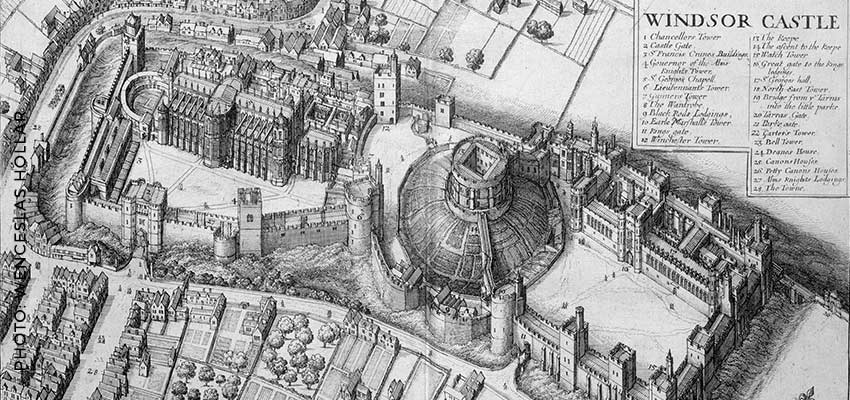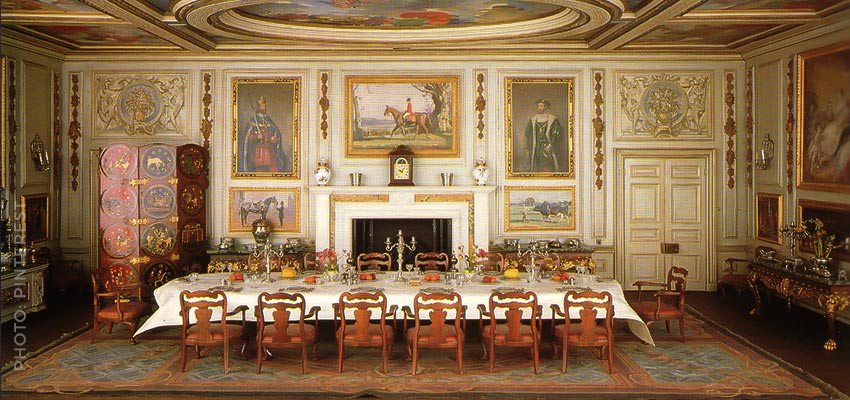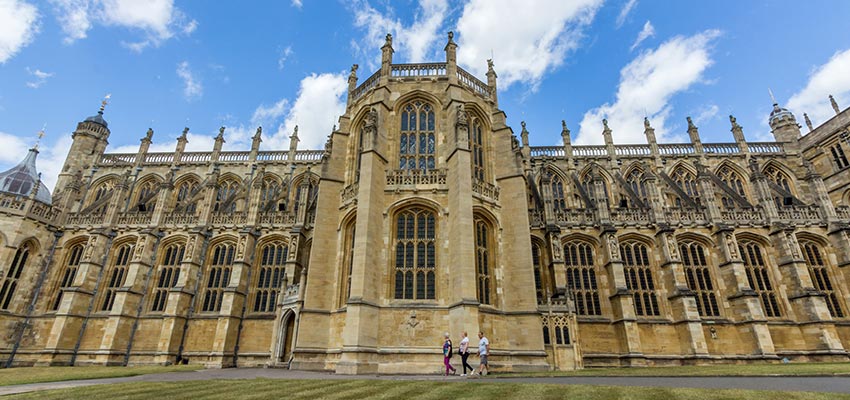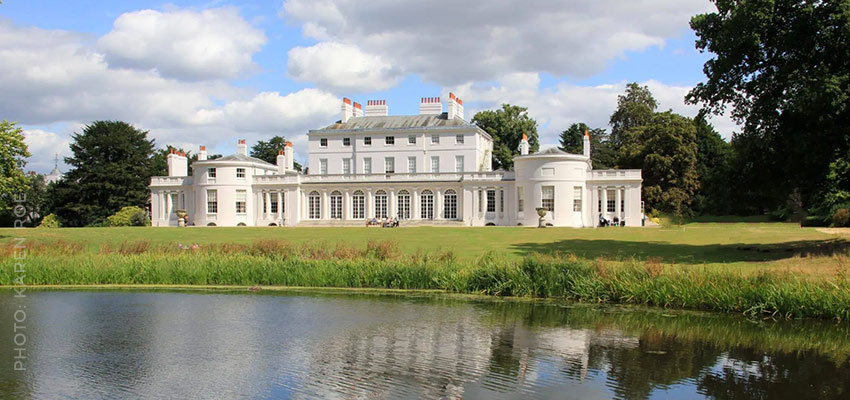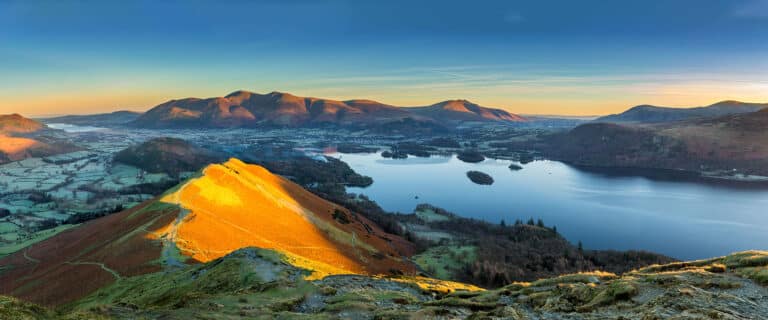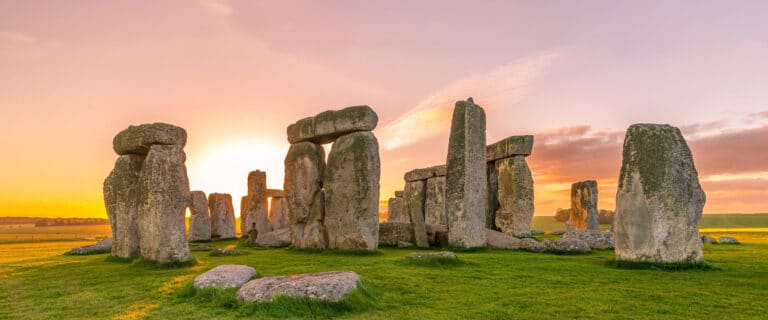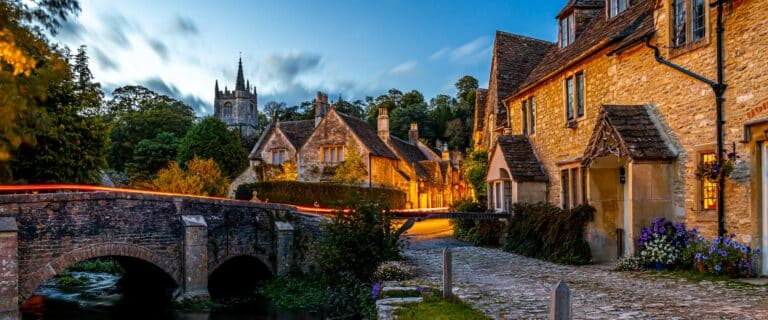Windsor Castle is just 20 miles west of Buckingham Palace, and it is the largest (and longest occupied) castle in Europe. Around 1070, William the Conqueror began building; 16 years later the castle was completed. It has over 1,000 rooms and more than 300 fireplaces. It houses a substantial portion of the Royal Collection, including furniture, paintings, and armor. Royalty has often used it for a weekend home—it is an ideal escape from hectic London.
Windsor’s Beginnings
As a royal residence, Windsor dates back to Saxon times. Windsor Forest was a favorite hunting ground of the Saxon kings, and it was strategically important because of its River Thames location. After William the Conqueror defeated the last Saxon king, he built a ring of fortifications around London. His great keep was the Tower of London, and he also built a series of nine castles. All were less than 20 miles away from the Tower. Help, if needed, was never more than a day’s march away.
The First Residents and Chapels
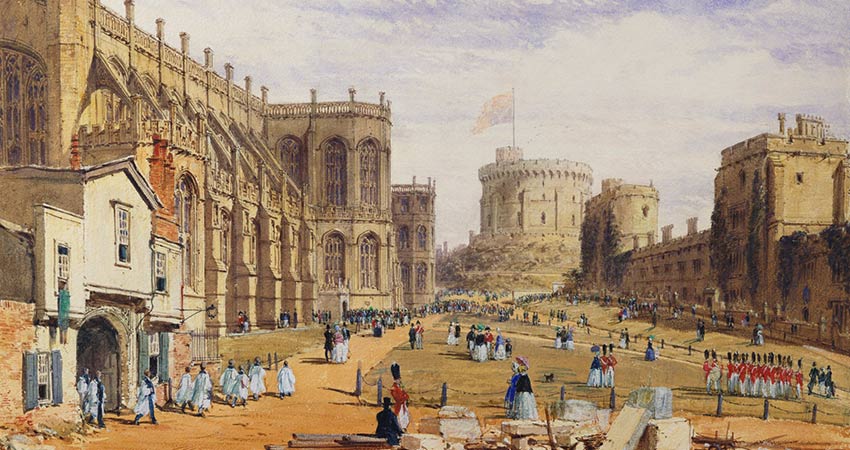
Henry I was the first monarch to use the castle as a primary residence. Henry II built extensively at Windsor between 1165 and 1179. He constructed the stone round tower in the middle ward as well as the stone outer walls on the upper ward. Henry III built the stone walls on the lower ward as well as three new towers between 1224 and 1230. He also built one of the first royal chapels at Windsor. (That chapel no longer exists, but the Albert Memorial Chapel occupies its place, housing the remains of George III, George IV, and William IV.)
Edward III used Windsor Castle extensively during his reign. He spent a great deal of time and money converting Windsor Castle from a military fortress to a residential castle. Edward IV began St. George’s Chapel, which was completed in 1528. It ranks next to Westminster Abbey as a royal mausoleum and contains the bodies of Henry VI, Edward IV, Henry VIII and Jane Seymour, Charles I, Edward VII, and George V. It also contains the body of the Queen Mother and her husband, King George VI, as well as Princess Margaret.
Windsor Castle Becomes Lavish
Some of the most attractive features you’ll see on your visit are due to George IV. When he came to the throne in 1820, he lavishly refurbished many palaces and castles, including Windsor. He built the grand entrance and staircase at the State Apartments. Today these apartments hold artwork from the Royal Collection, including pieces by Rembrandt, Rubens, and Canaletto.
George IV built the Semi-state rooms for his private apartments—they’re some of the most lushly decorated spaces in the entire castle. Royal Collection pieces in these rooms include items by Sèvres, Knapton and Vulliamy.
Queen Mary’s Doll House
One of the most popular rooms to visit is Queen Mary’s Dolls’ House. British architect Sir Edwin Lutyens worked for three years, from 1921 to 1924, to build this room. The result is arguably the most famous dollhouse in the world. It is a nearly perfect 1:12 scale replica of a 1920s aristocratic home. It includes a library filled to bursting with books from the literary titans of the time, a fully stocked wine cellar and a garden created by Gertrude Jekyll. It even has working electricity, hot and cold running water and operating lifts (elevators).
St. George’s Chapel
Visit this chapel—it’s one of the finest examples of Gothic architecture in England. It is particularly noted for its stone-fan vaulting. It’s also the home of the Order of the Garter, the senior order of British chivalry, established by Edward III in 1348. St. George’s is a “royal peculiar,” meaning the chapel is not subject to a bishop or archbishop; it owes its allegiance directly to the Queen. The tombs of ten sovereigns are here, including Henry VIII and Charles I.
Frogmore
Beyond the castle walls, in Home Park, is Frogmore. It was one of Queen Victoria’s favorite places, and she visited often during her long widowhood. There are numerous watercolors painted by Victoria and her daughters, Princesses Victoria and Louise, on display. Queen Victoria built a mausoleum at Frogmore after Albert’s death, and they are both buried there.
2018 saw the much-anticipated union of Prince Harry and Meghan Markle in St. George’s Chapel at Windsor Castle. (The streets of Windsor welcomed the couple in a horse-drawn carriage procession.) Harry and Meghan renovated Frogmore to use as their home before moving to the United States.
The entire castle complex (Lower Ward, Middle Ward with Round Tower and Upper Ward) covers 13 acres. When you include Home Park and Windsor Great Park, the compound covers more than 5,000 acres. Take the time to approach from the Long Walk for iconic castle views. The Changing of the Guard, similar to Buckingham Palace, is a stirring show.
The entire Windsor Castle complex (Lower Ward, Middle Ward with Round Tower, and Upper Ward) covers 13 acres. When you include Home Park and Windsor Great Park, the compound covers more than 5,000 acres. Take the time to approach from the Long Walk for iconic castle views. The Changing of the Guard, similar to Buckingham Palace, is a stirring show.
During your England vacation, you will probably spend several days in London. Ask your Destination Expert about including a visit to Windsor Castle!


